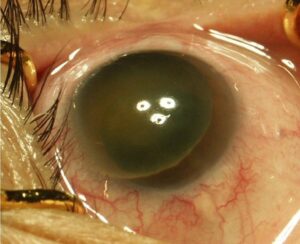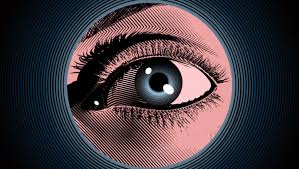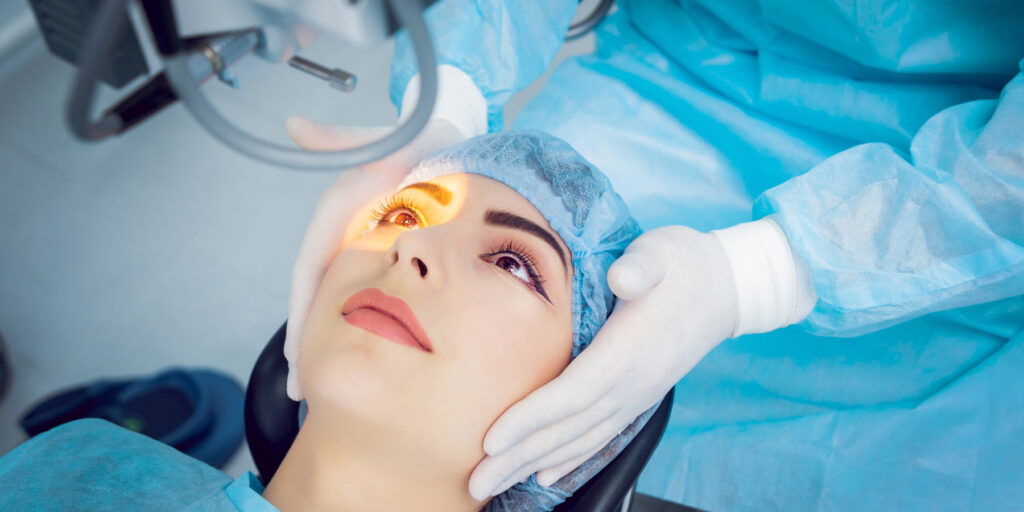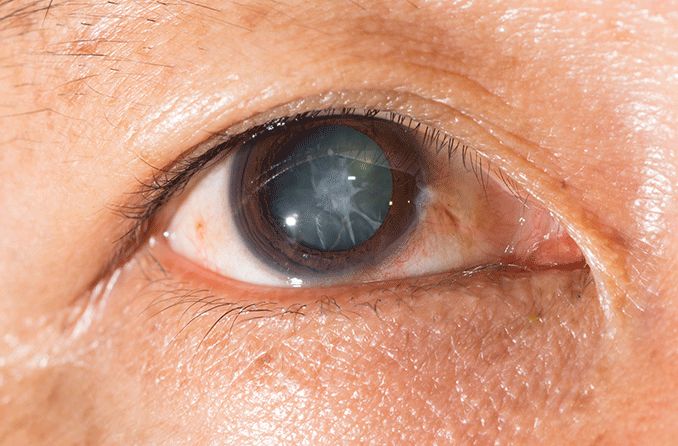A subluxated cataract is a type of cataract that has a displacement of the lens within the eye. It’s more common in older adults and can be caused by several factors, including age, head injury, and genetics. Subluxated cataracts often require surgical correction to restore vision. In this blog, we’ll discuss what constitutes a subluxated cataract, the signs and symptoms, and the treatment options.
Contents
What is a Subluxated Cataract?

A subluxated cataract is a type of cataract in which the lens has shifted slightly out of its normal position. This can cause blurry vision and other symptoms. Subluxated cataracts are common in older adults and are often caused by aging and related changes in the eyes, such as increases in pressure and inflammation. Surgery to remove the subluxated lens is the most common treatment for this type of cataract.
The origin of the word “subluxated” is not clear, but it may come from the Latin word “subluxate,” meaning to bend or distort.
Signs and Symptoms of Subluxated Cataract

There are a few key signs and symptoms of a subluxated cataract, which include:
Seeing spots or floaters in your vision
One of the most common signs of a subluxated cataract is seeing spots or floaters in your vision. This can be due to the clouding of the lens, which makes it difficult to see clearly. These floaters are often stationary, but they can also move around.
A change in your eyesight that you can’t explain
Change in your eyesight that you can’t explain is also a common sign of a subluxated cataract. This could be a sudden change in how you see, or it could be an ongoing issue with your vision that’s getting worse.
Sudden changes in your eye health
If you notice any sudden changes in your eye health, such as redness, tearing, and pain, it’s important to see a doctor. The eye health of a person over the age of 60 is especially fragile, and sudden changes can be an indication of a more serious condition.
decreased vision in one or both eyes
The last sign of a subluxated cataract is decreased vision in one or both eyes. If you notice that your vision is starting to decline, it’s important to see a doctor as soon as possible. A subluxated cataract can quickly lead to permanent blindness if left untreated.
Constant headaches
Another common sign of a subluxated cataract is constant headaches. This is because the pressure inside the eye from the cataract is causing pain and inflammation. These headaches can be debilitating, and they’re often a sign that you need to see a doctor.
How is a Subluxated Cataract Diagnosed?
A subluxated cataract is a type of cataract that occurs when one or more of the lens lenses has slipped out of their normal position in the eye. This can lead to a decrease in vision. To diagnose subluxated cataracts, your doctor will perform a physical examination and may also perform an optical coherence tomography (OCT) scan or a fundus exam.
The diagnosis of a subluxated cataract is generally made based on the symptoms and signs that you present. If you are experiencing a decreased vision, your doctor may also recommend cataract surgery to fix the problem.
Many tests and treatments are available to improve your vision and restore clarity to your vision. Some of these tests that may be recommended include:
-A physical examination to check for signs of subluxation, such as a decrease in vision or an inability to see in the far distance
-An OCT scan to view the inside of your eye and see if there is evidence of a subluxated cataract
-A fundus exam to look at the surface of your eye to see if there is evidence of a subluxated cataract
These tests are usually performed as part of a complete evaluation of your cataract situation. If you have symptoms that suggest you may have a subluxated cataract, your doctor may recommend one or more of these tests to confirm the diagnosis.
What Are The Risks of Having a Subluxated Cataract?
There are a few risks associated with having a subluxated cataract. Some of the risks of subluxated cataracts include:
The inability to see clearly because of the cataract
One of the most common complications of cataracts is that they can cause difficulty seeing. This is especially true if the cataract is in a focal area, such as the eye’s retina. If the cataract is subluxated, it may move slightly from its original position and cause more difficulty seeing.
Another complication of subluxated cataracts is that they can lead to decreased vision in that focal area. This can be particularly concerning if the person has sight in that area, as it could limit their ability to do things like drive or work.
The development of secondary cataracts, which can be more serious and difficult to treat
The development of secondary cataracts is a more serious complication of subluxated cataracts. Secondary cataracts are cataracts that form in areas other than the initial focus area of the subluxated cataract. They can be much more difficult to treat and can lead to decreased vision in other areas of the eye as well.
Increased risk for eye infections
The eye is a very delicate and sensitive organ, and the development of an infection in the eye can be incredibly debilitating. If the cataract is subluxated, it may move and spread infection more easily into the eye. This can lead to serious complications, such as blindness.
Increased risk for glaucoma
Cataracts can cause glaucoma, which is a progressive and often irreversible condition that damages the optic nerve. The development of a subluxated cataract can increase your risk of developing glaucoma, as it can lead to increased pressure on the optic nerve. The damage that glaucoma causes can be irreversible and can lead to blindness.
What Can Be Done to Treat a Subluxated Cataract?

Subluxated cataracts are a type of cataract in which the lens has shifted out of its normal position. This can cause decreased vision and impaired reading ability. Treatment for subluxated cataracts typically includes :
Surgery
Surgery is the most common treatment for subluxated cataracts. This type of cataract occurs when the lens in the eye becomes out of position and can no longer focus light correctly. Surgery is usually the best option because it can remove the cataract and restore vision.
Surgery is the only definitive way to treat a subluxated cataract. A subluxated cataract is a type of cataract in which the lens has shifted out of its normal position within the eye. This can cause blurry vision and can be corrected with surgery.
The most common type of surgery used to correct a subluxated cataract is an intracapsular lens implant. This involves surgically placing a custom-made lens into the eye to correct the vision problem. Other types of surgery include a capsulorhexis, in which the lens capsule is divided, and a vitrectomy, in which the vitreous is removed and replaced with artificial material.
Contact Lenses
Contact lenses can be a great way to increase your vision without having to go through the hassle and expense of glasses or contacts. However, contact lenses come with their own set of risks.
If you have subluxated cataracts, your contact lenses may not be sitting properly on your eyes. This can lead to infection, as bacteria can get into the eye through the lens. It can also cause blurred vision and even blindness if left untreated. If you notice any of these symptoms, it’s important to take your contact lenses off and see a doctor as soon as possible.
Eye-Glasses
Eyeglasses are a simple and relatively inexpensive way to treat a subluxated cataract. They can help reduce the symptoms of blurriness, double vision, eye strain, and headaches associated with the condition. Furthermore, Wearing appropriately tailored glasses to address the level of refractive error in both eyes may be necessary to achieve optimal benefit.
Some of the eye-glasses that can be used to treat a subluxated cataract include:
1. Single Vision Lenses: These lenses are designed for far-sightedness or near-sightedness, depending on the degree of refractive error in each eye.
2. Bifocal Lenses: These lenses are designed with two different prescriptions at the top and the bottom of the lens, allowing both near and far objects to be seen clearly without having to adjust focus constantly.
3. Progressive Lenses: These lenses have multiple focal points within a single lens that allow for a smooth progression from near to far vision, which is especially helpful when dealing with subluxation caused by presbyopia (age-related focusing issues).
Conclusion
If you’re like most people, you probably didn’t even know that cataracts could be categorized in this way. Subluxated cataracts are a relatively new type of cataract, and they are becoming more common as our population ages. In short, subluxated cataracts are caused when the lens nucleus (the part of the eye responsible for forming images) becomes displaced from its usual location within the eye. This can lead to several problems, including decreased vision and difficulty reading. If you think you might have a subluxated cataract, it’s important to get it checked out by your doctor as soon as possible.
Cataract surgery is a safe and painless procedure. At MantraCare we have a team of experienced eye surgeons, who will be happy to answer any questions on cataract surgery. Call us at +91-9711116605 for any inquiries.
